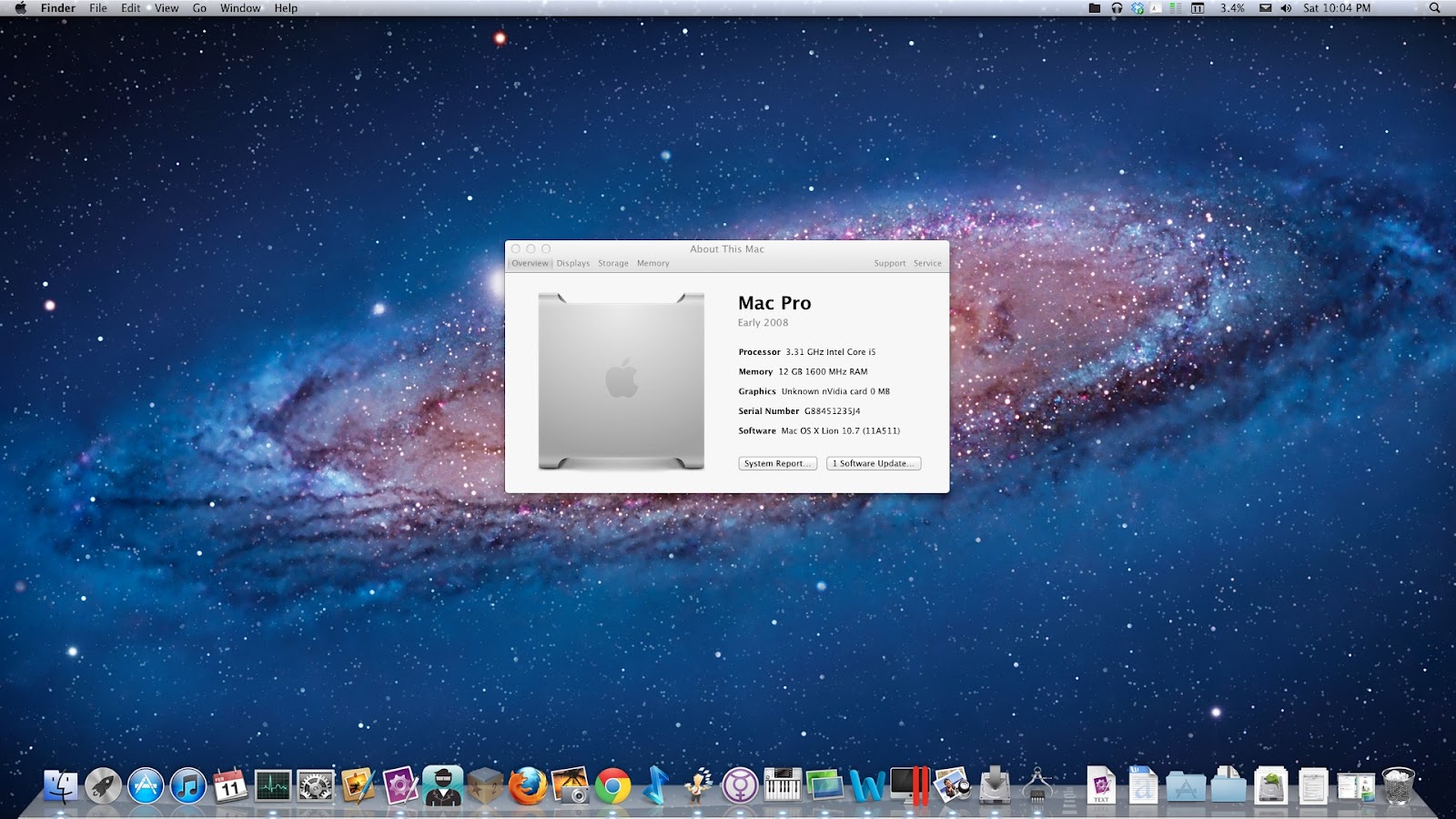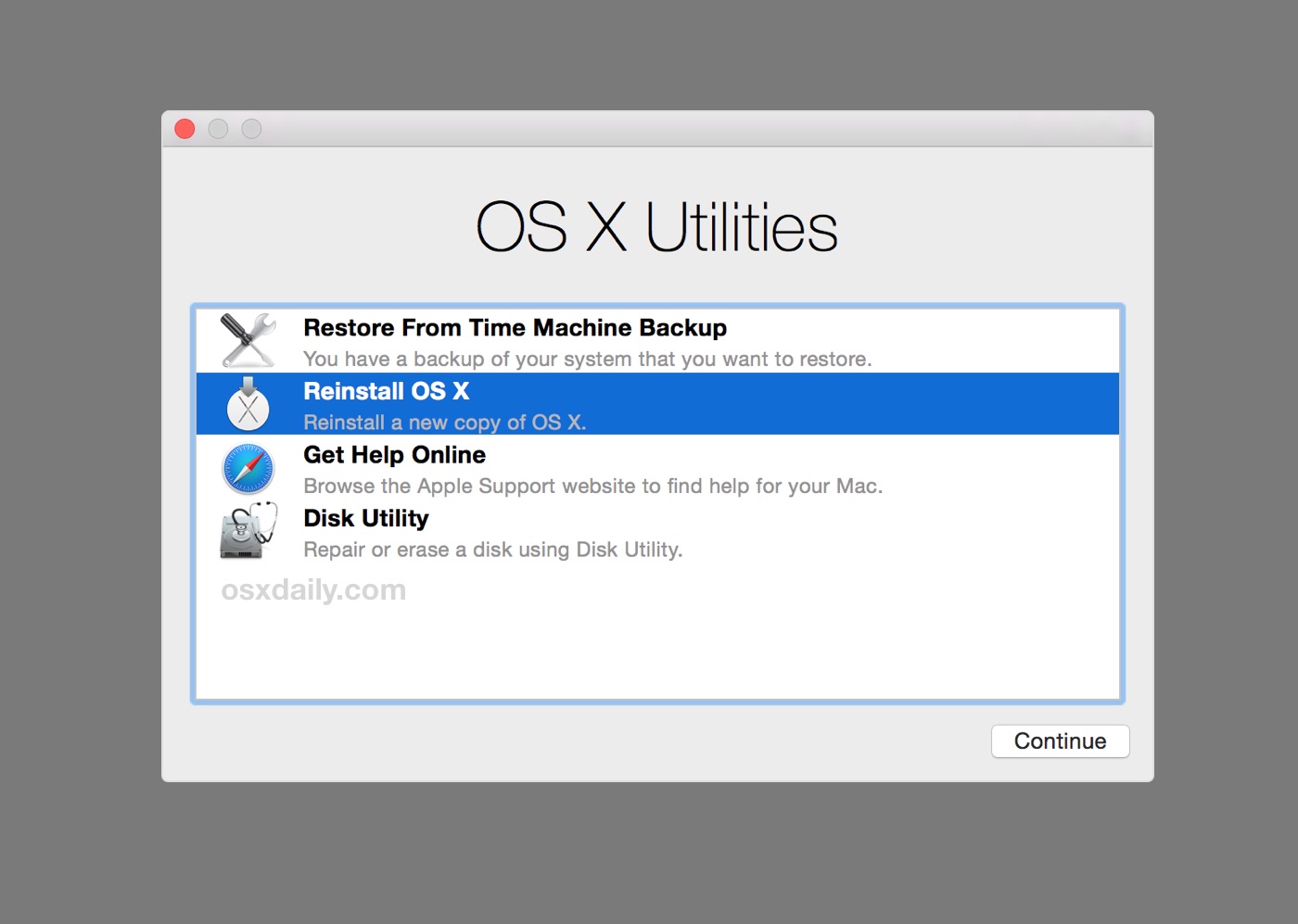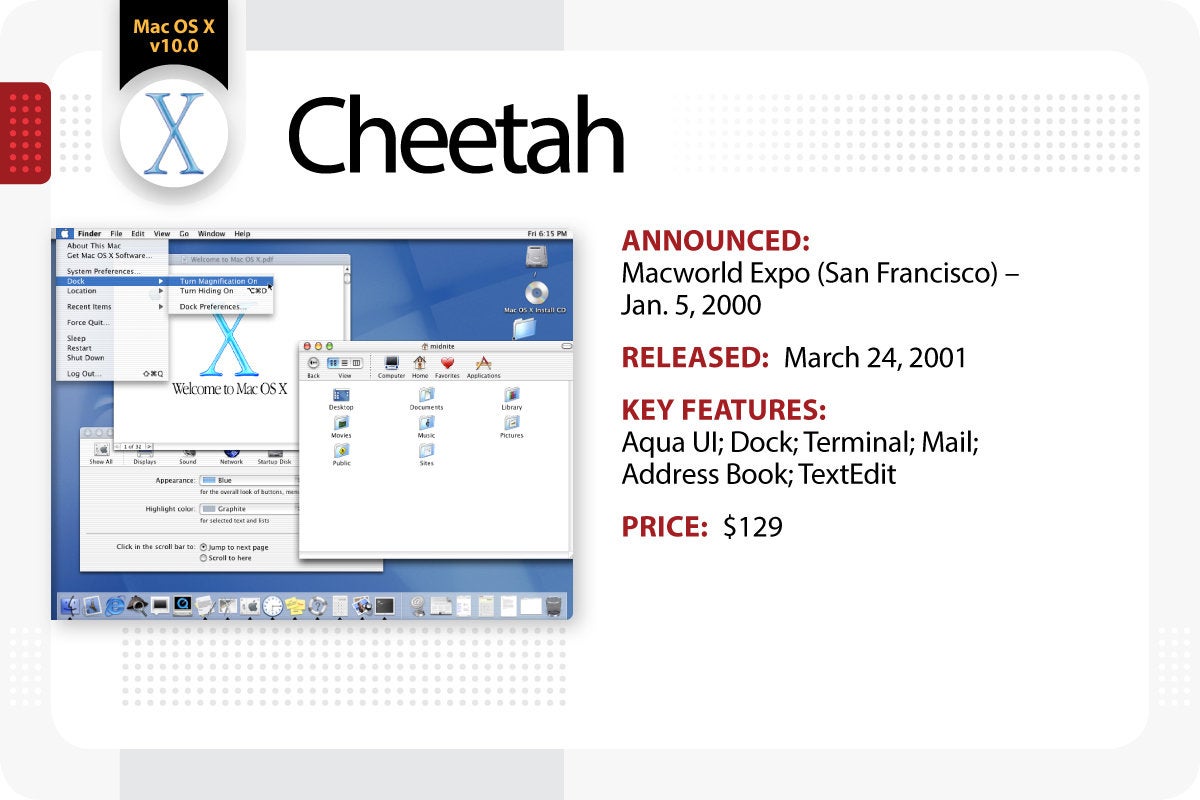Mac OS X Lion was released on July 20, 2011. It brought developments made in Apple's iOS, such as an easily navigable display of installed applications (Launchpad) and (a greater use of) multi-touch gestures, to the Mac. This release removed Rosetta, making it incapable of running PowerPC applications.
- Learning Mac OS X Basics This chapter introduces Mac OS X and key features such as the desktop, Finder, Dock, and Spotlight. You’ll learn how to use menus, buttons, and accessibility features that make it easier to use your computer, as well as how to work with applications and windows.
- Mac OS X can only be run on systems built by Apple, such as the Mac mini, iMac, etc. This means that if you want to run Mac OS X without hacking it and then running it illegally, you will have to buy an Apple computer, which are more expensive than normal PCs, and may break your bank. Also, Mac OS X is, like Windows, mainly closed-source.
- In fact, you can view all running processes and apps this way using any version of Mac OS or Mac OS X, whether that is macOS High Sierra, Sierra, OS X EL Capitan, Yosemite, Mavericks, Snow Leopard, Tiger, Mountain Lion, or any other version, they all include “Activity Monitor” and the various tools to monitor and observe processes this way.
When Apple introduced the Macintosh on Jan. 24, 1984, it wasn't the first computer to sport a graphical user interface (GUI) on top of its operating system (OS), but it was an early success in the consumer market. At the time, most consumer computers used text-based command lines. Computer owners had to learn numerous commands to navigate file systems and run applications. The Macintosh GUI seemed like a big leap ahead -- so much so that other companies began to invest in creating their own GUI OS.
A quick glimpse at today's Mac OS X reveals that the GUI is stronger than ever. But the current Mac operating system owes a lot to other computer projects, some of which weren't under Apple's leadership. To understand how OS X works, you have to know its history.
Advertisement
Advertisement
Shortly after the debut of the Macintosh there was a power struggle in the executive levels of leadership at Apple. Co-founder Steve Jobs found himself pushed to the edges of the company and eventually resigned. In 1988, Jobs went on to spearhead a project he called the NeXT Computer, which ran on an operating system called NEXTSTEP. Meanwhile, Apple continued to develop the Mac operating system.
Ultimately, NeXT received little traction in the computer market, though it was used in some high-profile applications. For example, World Wide Web founder Tim Berners Lee designed the first Web page using a NeXT computer [source: CERN]. And the executive power struggle at Apple continued as the company struggled to remain relevant. It was facing stiff competition with Microsoft's Windows OS. Apple executives considered purchasing or leasing an operating system from several different sources, including IBM. Ultimately, a phone call from Steve Jobs to Apple convinced the company to acquire NeXT in order to use its OS in Mac computers. This meant Steve Jobs was once again part of Apple.
Apple began to incorporate NeXT technology with the Mac OS. Apple also began to integrate features from a failed internal OS project codenamed Copland. In September 1997, Jobs became the interim CEO of Apple. A year later, he announced that Mac OS X -- the 10th generation of the Macintosh operating system -- would debut in 1999. On March 16 of that year, Jobs revealed the first build of Mac OS X to a group of developers. While the technical name for the operating system is Mac OS X 10.0, the company gave it the codename Cheetah. Since that first release, all OS X versions have a big-cat nickname. The most recent version as of the writing of this article is Mac OS X 10.7, also known as Lion.




Now that we've got some basic history out of the way, let's take a quick look at what operating systems actually do.
Explain Everything Mac Os X Os
Mac OS is Apple's desktop and laptop computer operating system, and the software that powers the Mac. Based on BSD UNIX and technologies developed at NeXT, which Apple acquired in 1996, it was first released as a public beta code-named Kodiak in 2001.
OS X Mavericks, was publicly unveiled at WWDC 2013 and released in the fall. The next version, OS X 10.10 Yosemite was shown off at WWDC 2014 on June 2 2014. Next in line — OS X El Capitan — officially arrived on Mac on September 30, 2015.
Explain Everything Mac Os X Downloads
During WWDC 2016, it was announced that OS X would be rebranded to macOS — keeping the software in line with other Apple products — starting officially with the release of Sierra.